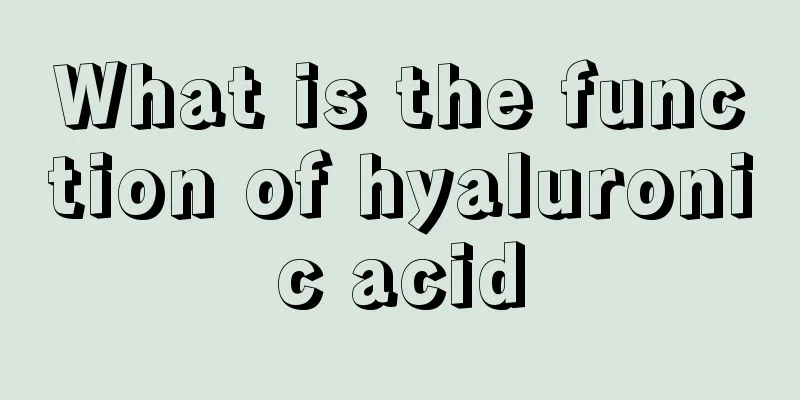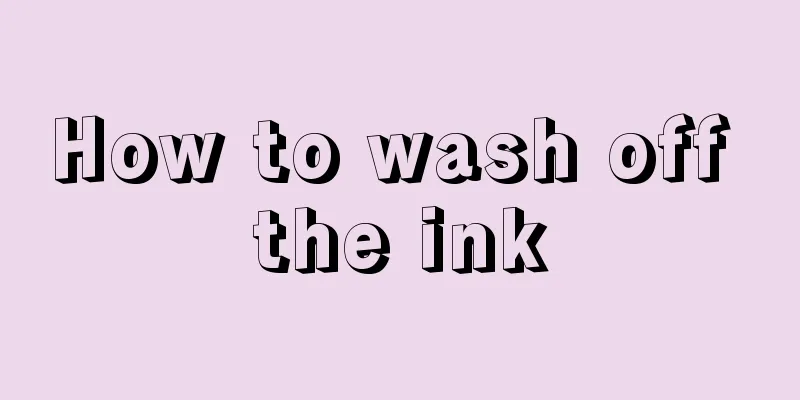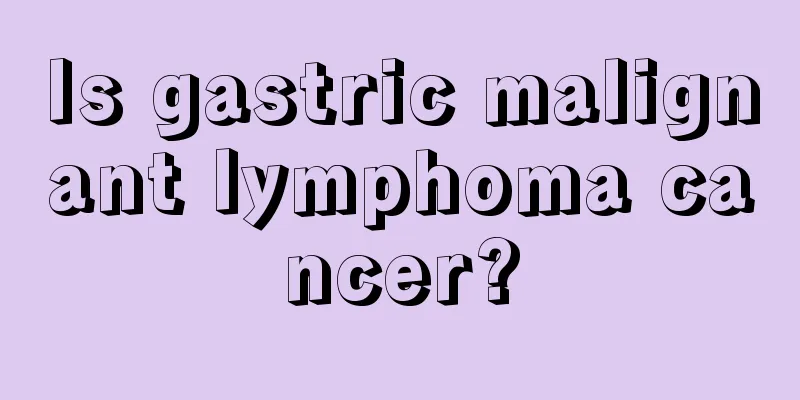How to treat patients with advanced liver cancer? What are the treatments for liver cancer ascites?

|
How to treat patients with advanced liver cancer The treatment of advanced liver cancer relies more on drug therapy, which mainly includes traditional Chinese medicine and chemotherapy. Chemotherapy has a more direct therapeutic effect on advanced liver cancer, which can shrink tumors and relieve symptoms to a certain extent. However, clinical statistics show that the effect of using chemical drugs alone for advanced liver cancer patients is not ideal. On the one hand, it is because the range of advanced liver cancer tumors is wide and there are many complications. On the other hand, it is because the physical function of patients with advanced liver cancer is already poor, and chemical drugs have greater toxic side effects, which will inhibit the body's immunity and cause damage to human functions. Although it can improve symptoms and prolong survival in the short term, the long-term effect is not good. Traditional Chinese medicine and Chinese medicine are used for systemic conservative treatment. The short-term effect is not as direct as chemotherapy, but it also has a significant effect in improving the quality of life and prolonging survival. Some data show that the treatment of advanced liver cancer with traditional Chinese medicine is better than that with chemotherapy. After one year of treatment with thiotepa and fluorouracil, the survival rates were 8.9% and 9.9%, respectively, while the one-year survival rate of the traditional Chinese medicine treatment group was 38.7%. Therefore, choosing the right treatment method is extremely important for how long patients with advanced liver cancer can live. In addition, patients with advanced liver cancer should also pay attention to daily diet conditioning. Only with good physical function and strong immunity can they resist the development of cancer and tolerate various drug treatments. Therefore, improving immune function and enhancing resistance to tumors is extremely important for patients with advanced liver cancer. First of all, in daily diet, it is necessary to eat regular, quantitative, small and frequent meals to reduce the burden on the gastrointestinal tract; eat more foods containing vitamins, eat more vegetables and fruits; often eat foods with anti-cancer effects, such as kale, cabbage, etc.; insist on low-fat, high-protein, easily digestible foods. In addition, you can also rely on taking Chinese medicine with anti-tumor and qi-replenishing and liver-nourishing effects, such as Jianpi Yishen Granules from the China Academy of Chinese Medical Sciences, to enhance immune function and improve disease resistance. What are the treatments for liver cancer ascites? There are two main methods for the treatment of hepatic ascites in clinical practice: Chinese medicine and Western medicine. The most effective treatment for hepatic ascites is Chinese medicine, which can balance water and salt metabolism and fundamentally cure ascites. It solves the problem that Western medicine urine only treats the symptoms but not the root cause, is prone to recurrence, and has large toxic side effects. Treatment for tumors Once liver cancer patients develop ascites, it is difficult to control, which seriously affects the patient's quality of life. The appearance of ascites is one of the signs that liver cancer has entered the late stage and the prognosis is poor. However, it does not mean that there is no value in treatment. Active treatment should still be given to improve the quality of life, prolong survival time, and create conditions for seeking the best treatment plan. For patients with liver cancer complicated by ascites, the primary tumor lesions in the liver should be actively treated first. Whether the tumor lesions in the liver can be controlled directly affects the increase or decrease of the amount of ascites and the progression rate of the disease. Treatment for liver cancer includes surgery, radiotherapy, chemotherapy, and interventional therapy as mentioned above, but these methods should be used with caution: when the amount of ascites is small or the disease is in its early stages, and the patient's liver function is not significantly damaged, surgery, radiotherapy, chemotherapy, and interventional therapy can all be used as appropriate, but the scheme that causes less damage to liver function should still be selected, or appropriate liver protection treatment should be given in time after treatment; when the ascites is moderate or above, and the liver function is obviously damaged, such as surgery, radiotherapy, chemotherapy, and portal vein infusion chemotherapy, in principle, they are not used. For a few patients who do have therapeutic value, it is best to make the ascites disappear or significantly reduce, but they should be used with caution to prevent aggravation of liver function damage. Transcutaneous drug injection, transhepatic artery infusion chemotherapy, and other methods that cause less damage to liver function can be used as appropriate, and appropriate liver protection treatment should be given at the same time. . Supportive care Liver cancer patients with ascites must actively control the growth of ascites, try to alleviate the patient's pain, and create opportunities for a complete cure of liver cancer. 1. Draining ascites can quickly reduce intra-abdominal pressure, relieve the compression symptoms of the heart, lungs, kidneys and gastrointestinal tract, and relieve the patient's pain. However, this relief is only temporary. Ascites will grow rapidly in a short period of time. Repeated drainage of ascites will lead to a large loss of body fluids and proteins, water and electrolyte disorders, orthostatic hypotension, and induce serious consequences such as hepatic coma. Therefore, draining ascites cannot be the first choice of treatment. For individual patients, when ascites affects respiratory function and cardiorenal function, abdominal puncture and drainage of ascites can be considered to reduce intra-abdominal pressure, increase renal blood flow, and temporarily improve respiratory function and cardiorenal function. After draining ascites, the abdomen should be bandaged with pressure to prevent a sharp drop in intra-abdominal pressure and the occurrence of adverse reactions such as hypotension. The first drainage generally does not exceed 800ml, and the amount of ascites drained each time thereafter should be less than 500ml, and albumin should be appropriately supplemented after draining ascites. 2. Reinfusion of ascites: If the ascites is not infected and no cancer cells are found, the ascites can be reinfused into the patient's body, which can not only relieve the patient's pain, but also prevent the loss of body fluid and protein, electrolyte disorder and hepatic coma caused by the large amount of ascites discharged; the ascites can also be reinfused after dialysis or ultrafiltration concentration, which can not only retain the body's protein, increase plasma osmotic pressure, reduce the formation of ascites, but also increase the body's effective circulating blood volume, increase the glomerular filtration rate, block the activity of the renin-angiotensin-aldosterone system, inhibit the secretion of antidiuretic hormone, maintain and correct the electrolyte balance in the body. It is better than simple ascites reinfusion. About 5000-10000ml of ascites can be extracted within 4-8 hours, and then reinfused after dialysis or ultrafiltration concentration to 500-1000ml. Generally, it is performed about 4 times within 2 weeks, and good results can often be achieved. It should be prohibited for patients with severe heart failure, coagulation disorders and recent gastrointestinal bleeding. 3. Intraperitoneal chemotherapy After the ascites is properly drained, the injection of anti-tumor drugs into the peritoneal cavity can reduce the formation of ascites, maintain a high level of drugs in the liver and peritoneal cavity, and the toxic reaction is much smaller than the systemic use of the same drug. It is reported that when 5-FU is injected into the peritoneal cavity, the drug concentration in the portal vein blood is 10-20 times that after peripheral intravenous administration. Commonly used drugs include mitomycin, cisplatin, carboplatin, nitrogen mustard, thiotepa, 5-fluorouracil, doxorubicin, epirubicin, bleomycin, etc. 4. Limit water and sodium intake. It is currently advocated that patients with ascites do not need to completely prohibit sodium salt intake. For mild cases, the daily sodium intake should not exceed 1g, and for severe cases, it should not exceed 0.5g, and water intake should be appropriately limited. 5. Diuretics can be used to increase the excretion of water and sodium. It is advisable to use multiple types alternately or in combination, and pay attention to the balance of electrolytes. In mild cases, potassium-excreting diuretics such as hydrochlorothiazide, chlorthalidone, and furosemide can be taken orally. Chinese Medicine Treatment The treatment of hepatic ascites is most ideal with traditional Chinese medicine. Hepatic ascites is a difficult-to-treat, stubborn ascites, which is considered by traditional Chinese medicine to be a "bloating" category. It is characterized by a distended abdomen, exposed abdominal veins, pale skin color, and spider nevi on the liver and palms. Traditional Chinese medicine believes that spleen and stomach qi deficiency hinders the healthy movement of qi, and the clear yang does not rise, so the essence of water and grain cannot nourish the internal organs of the whole body, and the turbid yin does not descend, resulting in water and moisture gathering inside, forming ascites. The TCM treatment of hepatic ascites is based on the TCM theory of "differentiation and treatment", and the dosage is adjusted according to the symptoms according to the performance of the Chinese medicinal materials. The Chinese medicinal pieces are concentrated and extracted using modern high-tech technology to make pure Chinese medicine preparations. This provides convenience for patients to use medicine. For example, the pure Chinese medicine preparation "Gu Zheng Wan" is the most effective medicine for the treatment of hepatic ascites. Ascites Pills are 100% pure Chinese medicine preparations, safe and harmless, and can treat multiple types of edema. It has the characteristics of rapid effect, high cure rate, short treatment period, and no toxic side effects. It can quickly relieve symptoms of ascites, edema, pleural effusion, edema, oliguria, eye and facial edema, etc. Ascites Pills solve the characteristics of Western diuretics that only treat the symptoms but not the root cause, are prone to recurrence, and have strong toxic side effects. It has the effect of balancing water and salt metabolism, preventing electrolyte disorders, and completely treating liver ascites, fundamentally curing edema and ascites. The effect of using Jiankang Bupi Pills in treating liver ascites will be better. It can improve the therapeutic effect of Ascites Pills. The treatment of hepatic ascites can only be cured by traditional Chinese medicine, which fully demonstrates that traditional Chinese medicine plays an important role in the treatment of various diseases. Although it will take some time to finally elucidate the cause of gastric cancer, based on existing research it is possible to propose several major preventive measures to minimize the harm of gastric cancer to humans. |
Recommend
Is it serious to have a gastric biopsy?
Gastric biopsy is performed through gastroscopy, ...
Applying talcum powder to private parts can cause ovarian cancer
Many women like summer because they can wear all ...
What to do if a newborn burps after eating
Whether adults or children, they will experience ...
Advantages and disadvantages of minimally invasive surgery for cervical spondylosis
Many office workers always think they are young, ...
What is the significance of central venous pressure
Central venous pressure is an important indicator...
Will colorectal cancer be passed on to the next generation?
In recent years, colorectal cancer has become one...
What are the effects of bloodleaf vegetable
There are many names for blood-skin vegetable, an...
How is coronary angiography performed? ct coronary angiography examination
What is coronary angiography? Coronary angiograph...
Can celery and tomatoes be eaten together
Celery and tomatoes are both common vegetables. T...
What does it mean to have an IUD
"Huan" is a colloquial term for an intr...
Avoid 3 Misunderstandings about Lung Cancer Treatment in the Elderly
Comprehensive treatment with surgical resection a...
There are 20 ways to deal with athlete's foot, sweaty feet and smelly feet
Athlete's foot, sweaty feet, and foot odor ar...
What does chest X-ray check?
Everyone knows that there is a kind of examinatio...
The magical effects of fresh aloe vera
Aloe vera plays a very important role in our dail...
What kind of tooth roots can be preserved
If there is a problem with a tooth, but the root ...









